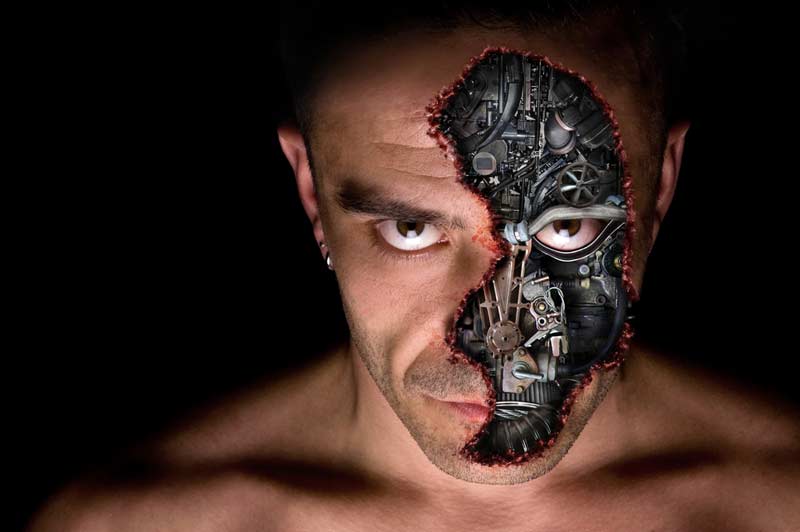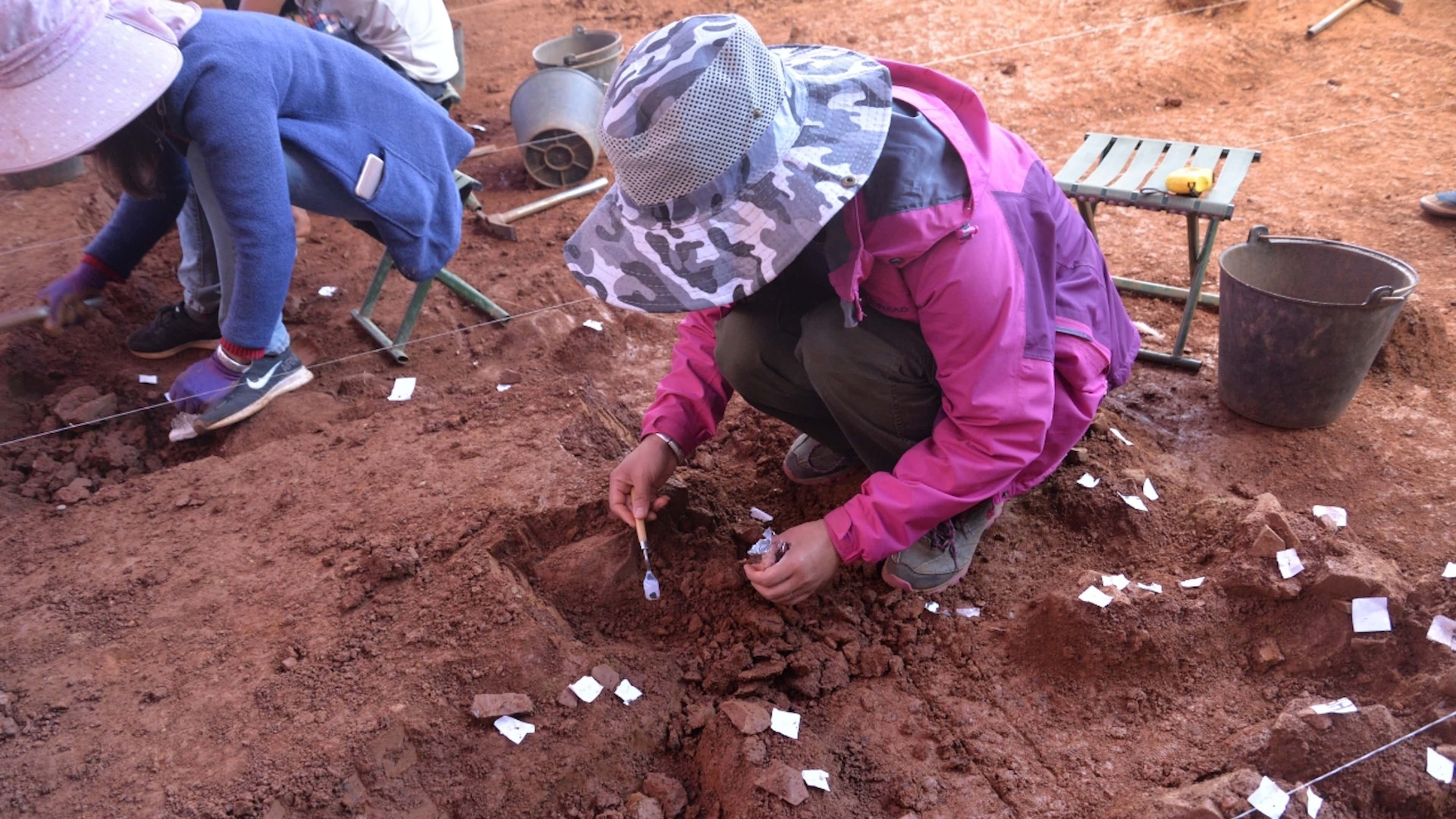
Building a Better You? The Era of Trans-Human Technology (Op-Ed)

Christopher Phillips is currently based at 'Imiloa Astronomy Center of Hawai'i in the Hawaiian Islands. He is involved in science, education and science communication projects in the UK, Europe, Asia and the Middle East. He is a physics and astronomy graduate and lives on the summit of one of Earth's most active volcanos, Kilauea,with his fiancée, Melissa and their cat, Sprout. This Op-Ed was adapted from one that appeared in Guru Magazine. Phillips contributed this article to Live Science's Expert Voices: Op-Ed & Insights.
Welcome to the future. You are now living in an era of trans-human technology — an era some call an evolutionary renaissance. And you are what we call a cyborg: part human, part machine.
For decades we have been integrating technology into our daily lives . Every person has become a mass consumer and mass producer of data. We engage with technology to the point that every waking moment is dominated by interactions with microchips. Our society has embraced technology willingly, and we have integrated technology into every facet of our daily lives: the way we conduct business, engage in discourse, wage war and stage revolutions; the ways we organize social gatherings, share intimate moments and fall in love. Technology has now become the means for all of these things that make us human. Welcome to the future. Welcome to now.
Right now, many of you may be reading this article on a mobile device — a device that, if you're honest, never leaves your side. Your touchscreen companion is millimeters from your skin from the moment you wake to when you go to sleep. You may not have realized it, but technology has never before been so intimately woven into our lives.
Technology has allowed us to improve ourselves, our interactions and activities. The manner in which we produce art, science, literature; the way we communicate and educate; our sharing of ideas and experiences; even our interactions with our environment — all of this has been redefined by the integration of technology into our society.
Take, for example, the act of reading, that most 'human' of activities. It is now performed by billions of people globally via a digital medium, a technology that didn't exist a generation ago. These digital pages exist as machine code: virtual and intangible. Yet the information they convey is as real and as meaningful as that conveyed by ink on a page. You can share this information at the speed of light with any other human on the planet — to entire populations, if you so desire.
Got a spare leg, anyone?
We are all participants in this technological renaissance and — like it or not — our nature as human beings is fundamentally changing. The next twenty years will see the relationship between human and machine redefined in a most profound way. This generation could be part of a radical evolutionary change in life, the like of which hasn't been seen since our ancestors crawled from the oceans eons ago.
It may sound frightening, but I am excited.
We draw ourselves ever closer to our technology because we want to better ourselves — to make our life somehow easier and more enjoyable. Of course, this is not a new concept: Humanity has always sought to do this, albeit through the use of simpler technology. Take the fashioning of basic tools by early humans, for example. Axes, spears, spades and knives allowed frail humans to overcome biological limitations. Tools allowed humans to hunt bigger game, to farm the land and to construct dwellings.
With robotics and genetics, we will once again change ourselves. Advancements in nanotechnology , mechanical prostheses, computational processing power and material science have already enabled engineers to create sophisticated limbs that assist those who have suffered the loss of their original limbs. Some of today's most advanced prostheses are now even able to restore limited sensation to the wearer. For the first time, amputees are starting to be able to feel through once missing limbs, enabling those individuals to perform complex mobility tasks, such as climbing stairs under one's own power. Similar developments are at work in helping blind people to see again, by bridging damaged optic nerves with computer chips that actually relay visual information to the brain. Advancements in technology have also helped to restore hearing, replace damaged organs and restore nervous system functions. We are starting to heal and restore ourselves in ways we previously could only have imagined.
See the world … through Google's eyes
"Augmented reality" is a rapidly advancing technology that is set to alter the way we view the world around us as we use glasses and visual displays to superimpose digital images into our visual space.
The military and emergency services have used augmented reality technology for many years. Heads-up-displays (HUD) in helmets and glasses present situational data — such as environmental conditions, navigational data and hazards — to a user regardless of location.
Google Glass is one of the first attempts at an augmented reality product intended for the general consumer. But more than showing you the way to the Post Office, it offers the ability to record via a digital camera and microphone. Google's digital specs are a first step, but imagine if your eye itself could perform the same functions. What if you had an enhanced eye that was able to display and gather data about your world? What if that eye looked, felt, and acted like a regular human eye, but possessed advanced capabilities? It is but a technological stone's throw away.
We could extrapolate these capabilities to other aspects of the human body. What if a combination of genetic engineering and prosthetic technologies enabled us to produce artificial limbs that resembled our own limbs in every detail, but with enhanced capabilities, such as extra strength and speed, and resilience to trauma and disease?

Would you consider replacing one of your limbs with an advanced prosthesis, knowing that it was no different from the limb you were born with — except, it was better? Or consider augmenting your brain and other internal organs so that they function with greater efficiency and are more resistant to disease and failure. Would you? Or perhaps, more importantly, what would stop you?
And that is the crunch question. While this may all sound like science fiction at the moment, these prospects are becoming very real; over the next decade or two we will see advancements in technology that will allow us to enhance ourselves in ways we have only dreamed of. The human body is, after all, but a biological machine. It undergoes mechanical failure and degradation just like any device. With sufficiently advanced technology, we can overcome these flaws in our biological construction to prolong the body's use indefinitely.
Some people will see this future as daunting and bleak, but I see it as one of hope. The idea of closely integrating technology into our bodies and minds will have profound implications for society — but the path is set. Your smartphone, tablet, headset, pacemaker or prothesis are the first iterations of this union of humans and technology. We have already chosen to embrace this technology, and for the most part, have used it responsibly.
Yes, there are risks and some will always misuse any technology for personal gain. (Take piracy and privacy invasions, for example.) But being aware of these risks will help society to minimize the dangers.
It's an exciting future. I believe that we as a species will ultimately apply this technology responsibly, just as we have throughout history. New technology will redefine society and create one that is more democratic, equal and just — a society in which every human being has the opportunity to fulfill their potential, regardless of physical or mental disposition.
In the end, combining humanity with technology will help us all to become more human.
Follow all of the Expert Voices issues and debates — and become part of the discussion — on Facebook, Twitter and Google +. The views expressed are those of the author and do not necessarily reflect the views of the publisher. This version of the article was originally published on Live Science.
Sign up for the Live Science daily newsletter now
Get the world’s most fascinating discoveries delivered straight to your inbox.










